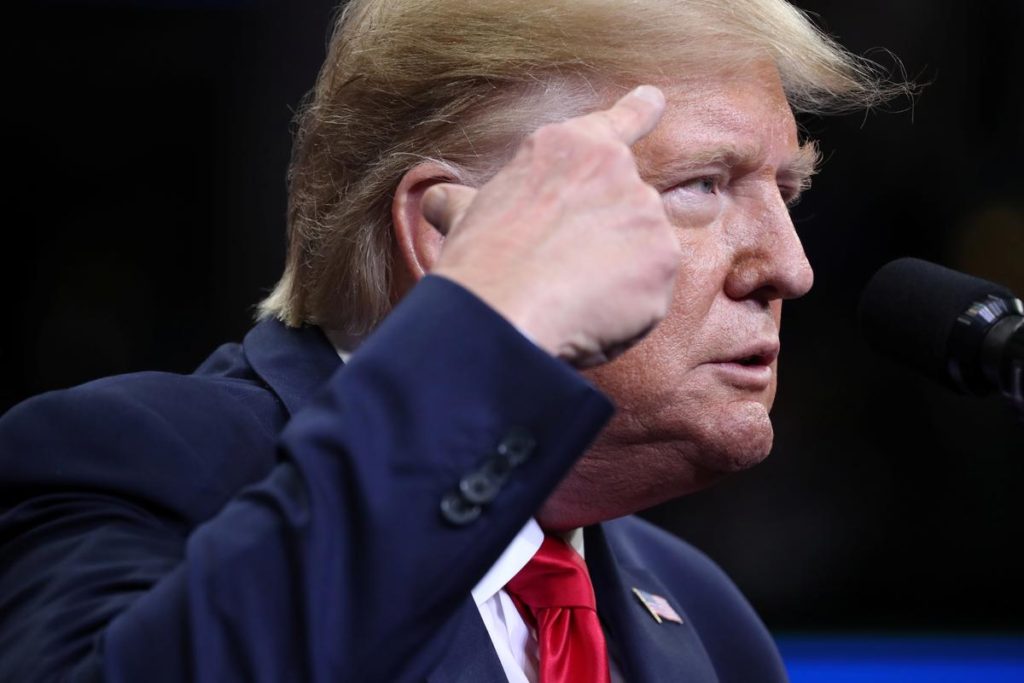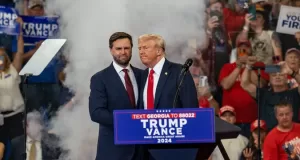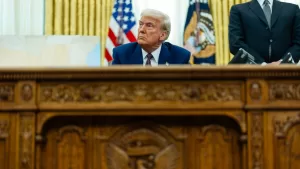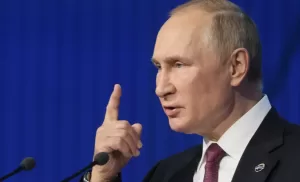Two articles: by Andrea Germanos and Jack Ramus
The head of the World Health Organization warned Friday that humanity is facing “a new and dangerous phase” of the coronavirus crisis. “The pandemic is accelerating,” said WHO Director-General Tedros Adhanom Ghebreyesus.
The remarks from came at a media briefing in Geneva where Tedros announced a grim milestone.
“More than 150,000 new cases of Covid-19 were reported to WHO yesterday—the most in a single day so far,” he said.
Tedros acknowledged that people worldwide were eager to be free from lockdown restrictions but warned that “the virus is still spreading fast” and is “still deadly.”
He added that “strict and sustained implementation” of public health measures to curb the spread of the virus remains essential but also noted the difficulty of carrying out such efforts in refugee camps, where migrants face huge risks of being sickened by Covid-19.
The new comments come as a tally from Johns Hopkins University shows there have been 8,520,761 confirmed cases of the coronavirus and 454,889 deaths from Covid-19. The total cases include 2,203,659 just from the United States, where the virus has claimed the lives of 118,519.
Tedros, in his Friday comments, stessed theneed for countries to focus on “the basics” to tackle the public health crisis, including testing.
President Donald Trump, meanhwile, told the Wall Street Journal this week that testing for Covid-19 is “overrated.”
(Andrea Germanos is senior editor at Common Dreams, a non-profit media centre in the United States.)
◆◆◆
Second Covid-19 Wave and the US Economy
Jack Ramus, 15 June 2020
Over the past week evidence keeps growing that the US has entered a second wave of the Coronavirus pandemic. More than 117,000 Americans thus far have died in just the past three months and more than 2.1 million have been infected. That compares to roughly 460,000 and 7.6 million worldwide. With roughly 5% of the world’s population, the US has about 25% of the world’s virus cases—a testimony to the abject failure of the US thus far to manage the virus.
That failure is perhaps most evident in Trump’s virtual withdrawal from the ‘war’ on the virus and what appears to be his new strategy of letting the states each deal with it as they may and can. Trump’s government is clearly in retreat, concerned only with one thing: to get Trump re-elected no matter what the cost in lives or economic well-being of American citizens.
Trump’s policy boils down to this: totally reopen the economy now, blame the states, World Health Organization and the Chinese for the crisis, declare the rising numbers of infections, hospitalizations, etc. as ‘fake news’, blame a 2nd wave on increased testing, and hold daily mass political rallies from now until November.
Trump is a phony ‘war’ president who long ago dropped his rifle and fled from the field of battle. It’s as if president Franklin Roosevelt on December 8, 1941 left town to sail down the Potomac river on his yacht to contemplate the December 7 Japanese attack on Pearl Harbor, Hawaii—instead of appearing before Congress, as he did on December 8, 1941, to declare war on Japan and rally the country in an all out effort. Roosevelt immediately announced a comprehensive ‘war production act’ to take effect across the entire US economy in just a few weeks. His first executive order was to develop and mass produce penicillin, which was thought impossible but which the US did within just a few months. In contrast, what we got from Trump was a declaration the virus a hoax, a proposal for a bogus hydroxychloroquin treatment that the CDC has since declared dangerous and likely to cause heart attacks, and a public announcement it would all be over by Easter. And today, even more incredibly, Trump has said the virus would go away if we just didn’t test for it so much.
Trump’s only concern is to hold rallies with his conservative red state base that will exacerbate the contagion effect of the virus. As President of only the 30% (his base), he is little concerned about the country at large or the virus ‘war’ that has already killed more Americans than every US war together since 1945. Trump’s only actual order after he announced the activation of the war production act months ago has been to force meatpacking workers back to work else their forfeit unemployment benefits. Work or die! will be the legacy of Trump as a war president!
Trump’s economic legacy, history will also eventually show, is to have pushed for a premature reopening of the US economy in the midst of the pandemic and a resurging of virus infections.
Indicators of a second wave in the US are now rising in no fewer than 18 states, most of which are located in the South and Southwest.
Key indicators of a virus re-surge in the US—like hospitalization rates, death rates, and the test positivity rate—are all on the increase throughout those 18 US states. In some states, like Arizona, the availability of ICU beds is fast approaching maximum capacity. Texas is now experiencing more than 2,247 new hospitalizations per day, after having stated to reopen its economy weeks ago, on May 1. That’s seven straight day of rising hospitalizations per day for the state. Florida experienced a new one day record of more than 1900 cases just this past Friday. Alabama, Arkansas and South Carolina are all witnessing surging hospitalizations as well, approaching max capacity in ICU beds.
But it’s not just the deep South. West coast states—Nevada, Oregon, Alaska, and others—are recording a new rise in cases, reversing a prior downward trend. That fact suggests what’s going on now is more than just a first wave. What we may now have is a simultaneous extension of the first wave into the red states, as well as an emergence of a second wave congruent with that extension.
Meanwhile, scientists have recently confirmed that the Coronavirus has indeed now mutated, and is potentially five times more contagious.
Congruent Developments Fanning the 2nd Wave
It is in this general environment that the US is now rushing toward reopening its economy, especially in the South, Southwest and Mid-west, where a more or less full reopening is entering its fifth week in some cases. Added to the premature reopening are public demonstrations against policy brutality that have grown and continue, overlaid on the economic reopening. Perhaps the biggest factor contributing to the emergence of a second wave, however, has been the lack of public self-discipline in many states, especially the ‘red’ ones where Trump’s political base is concentrated. A rising disregard of social distancing has been the growing norm in many states. It’s not just that many people don’t believe they can catch the virus; it’s also that they just don’t care if they spread if they do come down sick.
Add to all this the example of President Trump himself, who has announced he now plans to begin holding mass election rallies once again—thus sending the message to the public it’s ok to engage in mass gatherings. And if they are to follow Trump’s example, they’ll do so without wearing face masks. As the moronic right wing blogosphere has been saying—and Trump has again picked up—the rising rates of infection are because we’re testing too much. Social distancing may have ‘flattened the curve’ in places like New York City and big urban centers of the northeast. But the general economic reopening now underway, the widespread protests and demonstrations against police brutality, Trump’s personal behavior example to his political base and, probably and most important, the general lack of social discipline by the populace in many regions like the country, have ensured the effects of Covid -19 in the US are now on the rise once again.
And it does not appear any of these sources driving a 2nd wave are about to abate any time soon.
Trump administration key spokespersons, like economic advisor Larry Kudlow and Treasury Secretary, Steve Mnuchin, have both declared publicly this past week the US economy will not shut down and shelter in place again a second time. Trump thus has decided to trade tens of thousands of more US lives for the right of business to return to producing revenues and profits.
Nor does it appear Black Lives Matters protestors, mobilizing against decades of intensifying police brutality, will relent in their public demonstrations.
Nor that a majority of residents of the ‘red’ states will finally acknowledge the need for social discipline and social distancing soon by all indicators when the trend is actually opposite.
Nor does it appear Trump is about to reconsider holding mass election rallies, an action that sends a clear message to the rest of the country that it’s ok to gather in large groups, to abandon social distancing, and mask wearing.
A 2nd Wave Means W-Shape Economic Stagnation…Or Worse
In short, it is increasingly likely that things are about to get worse in terms of US public health. And as that happens, so too will the US economy experience a further negative impact from the virus. A 2nd wave now emerging means not just a further decline in public health, but an eventual 2nd wave of problems for the US economy as well.
What a second wave all but ensures is that the US economic recovery will not be ‘V-Shape’ but will be ‘W-Shape’; that is, a W shape recovery characterized by periods of short and shallow GDP growth, followed by brief periodic economic relapses thereafter. These short, shallow recoveries and relapses may repeat and continue for years to come.
Following such a duration of economic stagnation, a major threat grows that could usher in an economic depression perhaps even worse than the 1930s: should the economic stress building from weak, short and shallow recoveries—i.e. an extended deep economic stagnation for years to come—result in an inevitable flood of business, local government, and household debt defaults and bankruptcies, it will eventually overwhelm the financial system. At that point the short-shallow recoveries and relapses will give way to a more generalized banking crisis that will make 2008-09 great recession appear as a minor dress rehearsal. A next great depression rivaling, and perhaps exceeding, the experience of the 1930s may well be the consequence in 2021 or beyond.
Great Depressions are always the result of mutually amplifying crises in the real and financial sectors of the economy. The current deep contraction of the US economy has yet to experience a subsequent banking-financial system crash. However, the longer the current seriously wounded US economy continues to stagnate, slipping in and out of recessions for years, the more likely it becomes that a wave of business and consumer defaults (i.e. failure to pay interest and principal) on record levels of business-household-local government debt will wash over the economy.
When that happens, banks will have to assume the bad debt of failed companies, households, and local governments on their own bank balance sheets. That freezes up lending to business and households in general. Further mass layoffs then follow. Following the bank lending freeze, the real economy contracts still further as the banking system crashes. A financial crisis converges with the real, deep economic contraction and stagnation already underway. As the two systems—financial and real economy—mutually interact and amplify each other, the outcome is a descent into a bona fide economic depression.
2008-09 Great Recession & 2020 Briefly Compared
In 2008-09 it was the financial side that crashed first, subsequently dragging down the real economy 5%-10% for several quarters and producing unemployment rates of 15%-20%. Thereafter it took six years just to recover the jobs lost in 2008-09 and return to 2007 employment levels. Wages for most working families stagnated or fell for the next decade. Working class family debt ballooned in lieu of real wage gains across all categories: credit cards, autos, mortgage, student debt, installment debt, etc., to almost $15 trillion today. In the first three months of the virus that household debt has risen 16% further, according to the New York Federal Reserve. Federal Reserve policies of 2008-09 quickly bailed out investors and the banks, but did little for jobs, wage and income levels for workers, and working class living standards in general.
At the same time corporate profits nearly tripled from 2009 to 2019. Corporate America in turn awarded its shareholders nicely. Stock buybacks and dividend payouts under Obama averaged more than $800 billion a year from 2009 through 2016. To that under Trump was added a further $3.4 trillion in just three years. That’s a total of more than $10 trillion of income and wealth distributed to shareholders in a decade! In contrast to wage stagnation and decline for the bottom 80% of US households.
This time, in 2020, the causal relationships between the two sectors—real and financial—are reversed. This time it’s a crash of the real side of the economy, at least four times worse than that which occurred in 2008-09!
In 2008-09 it was the financial crash that precipitated, accelerated and deepened the real economic contraction. Today in 2020 the causal relation is reversed, and may prove worse. The real economy contraction and extended stagnation may precipitate a financial crisis which, in turn, could feedback further on the real economy and cause an even deeper and longer contraction. Mutual feedback historically always leads to a great depression. It doesn’t matter which precipitates which. The mutual negative interaction is the key determinant that drives the depression.
In just the 1st wave of Covid-19, from late February through May 2020, working class households lost more than $1 trillion net in wage income—even after $500 billion in expanded unemployment benefits and government $1,200 checks are factored. In contrast, corporations were provided since March with $1.7 trillion in loans and grants plus another $650 billion in further business tax cuts under the March 2020 ‘CARES Act’. And the Federal Reserve US central bank has provided another $3.3 trillion in loans to banks, to corporations, and to investors as well. That’s a 10 to 1 ratio: more than $5.5 trillion to business and only $500 billion to the rest. Most of the subsidy to business is being hoarded, moreover; whereas, most of the $500 billion has been already spent. Neither provide any further real stimulus to the economy in the second half of 2020.
In the 2nd wave on the horizon, moreover, more of the same is yet to come, as it appears likely Congress in its forthcoming ‘HEROES Act’ will discontinue the March 2020 unemployment benefits extension that expires the end of July; will refuse to provide further income supplement checks; and will instead use the ‘savings’ from such programs to provide direct wage subsidies to business. By some estimates, the Government (and thus the taxpayer) plans to subsidize business further by providing a wage subsidy of up to 85% of wages that were previously paid by businesses to their employees. In short, instead of unemployment benefits to workers, it will be wage payment subsidies to businesses.
In short, a 2nd covid-19 wave will coincide with an already seriously depressed US economy with little further real economic stimulus in the pipeline. That contrasts with the great recession of 2008-09, which hit a real economy that was still growing strongly when recession hit late 2007.
The Great Capitalist Experiment: Pre-Bail Out the System
So far the central bank of the USA, the Fed, has staved off a banking crash by pumping $3.3 trillion into bankers and investors, in effect pre-emptively bailing them out before a crash actually occurs! Congress has provided another $1.7T so far to pre-bail out the non-banking side of the business economy with loans and free grants, plus another $650 billion business-investor tax cuts. The Fed has promised even more ‘free money’ to banks & businesses. And Congress has signaled it is prepared to provide still more to business—if not to workers, consumers, and state and local governments. (For example, the forthcoming ‘Heroes Act’ proposes to end $1200 income checks and $600 supplement unemployment benefit checks to workers and, instead, take the money and give it to business in the form of government paid wage subsidies!).
An historic policy experiment is thus now underway in the US economy. By pre-emptively bailing out the banking system with trillions of dollars of liquidity (money at low or no interest rates) the Fed is attempting to ‘fatten up’ the banks with record excess money reserves on hand to enable them to absorb the defaults, bankruptcies, and deflation that are coming—even before it occurs. The Fed is also, in another historic first, attempting to pre-bail out broad sectors of non-bank businesses in the US with $1.7T in loans and grants. Something its own legislative mandate actually prohibits. That non-business bailout is designed to reduce the flood of defaults and bankruptcies even before they ‘hit’ the banking system. So the Fed (with assistance of the US Treasury and Congress) is bailing out the capitalist system today even before it crashes. Whether it will succeed in doing so remains to be seen.
One thing is certain, however. The Capitalist state in the 21st century in the USA today is engaged in a massive subsidization of Capitalism itself on a grand scale never experienced or even envisioned before. It is flooding the system with free money and liquidity (loans, grants, tax cuts, QE, corporate bond purchases, etc.) in an attempt to prevent another ‘great recession’ of 2008-09 that would prove to be an even ‘greater recession of 2020-21’—or perhaps morph into the first Great Depression of the 21st century.
A second virus wave will certainly test the experiment of a massive pre-bailout of the system now underway. How broad and deep the second wave goes is yet to be determined. Similarly the specific economic ‘transmission mechanisms’ and ways in which the health crisis impacts and exacerbates the current economic crisis further.
But even if there is no second wave of significant dimension in coming months, the independent dynamics of the current crisis will eventually precipitate a banking-financial crash nonetheless. It will just take longer. For the US (and global) capitalist economy is seriously wounded, fundamentally. It was already slowing and in decline in the US and globally, in certain sectors of the economy. A second virus wave will accelerate the process of weakening and decline, as it did the first wave. At some point that will inevitably translate into a financial system crisis once again as well. At that point, a new phase, more serious, of the crisis emerges: i.e. the financial crisis occurs, more likely than not drives the seriously wounded ‘real economy’ into a deeper contraction. No longer mere stagnation and W-Shape. Now a clear descent into bona fide economic depression similar to the 1930s, or perhaps even worse.
Until the financial banking crash takes place, the US economy stagnates more or less in a W Shape trajectory. Short shallow recoveries are followed by short relapses and returns to recessions. This will occur regardless of whether a significant 2nd wave of the virus impacts the economy.
The Covid-19 effect, whether first or second wave, is not the sole factor driving the economy and the current economic crisis. Forces have now set in motion a continuing economic crisis, virus or no virus. It’s just a matter of time and place before the economic crisis enters a new and even more unstable phase.
It’s not a Covid-19 economy. It’s a capitalist economy, the instability of which has been rendered even more unstable by the current Covid-19 health crisis. And that instability is not going away should the virus disappear which, of course, is not about to happen either.
(Dr. Jack Rasmus, Ph.D. in Political Economy, teaches economics at St. Mary’s College in California. He is the author several of several books.)




